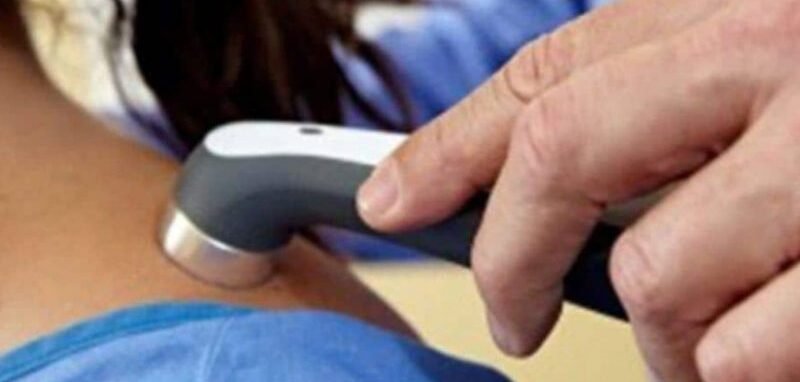7777 Warren Parkway, #370 Frisco, TX 75034
Welcome to Chiropractor of Frisco, TX !
-
Call for help: 469-516-2225
Welcome to Chiropractor of Frisco, TX !
Call for help: 469-516-2225

Ultrasound has been used as a treatment modality for sports injuries by therapists over the last 50 years.
Therapeutic ultrasound involves the use of high-frequency sound waves to treat various medical conditions. These ultrasonic waves are beyond the range of human hearing and are generated through mechanical vibrations in the metal treatment head of an ultrasound machine. When this treatment head is applied to the skin, it transmits energy into the underlying tissues.
To ensure maximum effectiveness, a special ultrasound gel is often applied to the skin. This gel acts as a medium for the sound waves, facilitating their travel and preventing dissipation into the air. Alternatively, ultrasound can be administered underwater, which serves as another effective medium for the waves.
While the effects of therapeutic ultrasound are still a subject of ongoing research, many practitioners swear by its benefits based on personal experience. Let’s take a closer look at some of the proposed effects:
One of the most widely accepted benefits of therapeutic ultrasound is its thermal effect. As the ultrasonic waves penetrate the skin, they cause surrounding tissues, especially those rich in collagen, to vibrate. This vibration generates heat, which is often not perceptible to the patient but can have significant therapeutic benefits.
The increase in temperature can enhance the extensibility of ligaments, tendons, scar tissue, and fibrous joint capsules. Additionally, the heat may help reduce pain, alleviate muscle spasms, and promote the healing process.
Therapeutic ultrasound is also believed to accelerate the healing of soft tissue injuries by affecting the inflammatory and repair processes. It is thought to attract more mast cells to the injury site, which can increase blood flow and expedite the resolution of inflammation. However, due to this increased blood flow, it is generally not recommended to use ultrasound immediately after an injury.
Furthermore, ultrasound may stimulate collagen production, aiding in the proliferative phase of tissue healing. This can improve the extensibility of mature collagen, positively impacting fibrous scar tissue that forms post-injury.
The 8-week ultrasound is a specific application within therapeutic ultrasound, often discussed in the context of long-term treatment plans. This approach involves using ultrasound therapy consistently over an eight-week period to yield significant improvements in tissue repair and pain reduction. Although more research is needed to fully validate this practice, preliminary results have shown promise.
Therapeutic ultrasound is typically administered using a small metal treatment head that emits ultrasonic beams. The treatment head is moved continuously over the skin for about 3-5 minutes per session. For acute injuries, treatments may be repeated 1-2 times daily, while chronic conditions might require less frequent sessions.
The dosage of ultrasound can be adjusted in terms of intensity and frequency. Lower frequencies offer greater depth of penetration, making them suitable for deep-seated tissue injuries. Conversely, higher frequencies are used for injuries closer to the skin’s surface.
While therapeutic ultrasound has numerous benefits, certain contraindications must be considered to avoid potential harm. It is crucial not to use ultrasound therapy if the patient has any of the following conditions:
Given its potent effects, therapeutic ultrasound should not be used indiscriminately. Patients with severe health conditions such as malignancies or acute infections should avoid this treatment to prevent exacerbating their condition. Always consult a healthcare professional to determine if therapeutic ultrasound is appropriate for your specific health situation.
Therapeutic ultrasound offers a promising avenue for treating various soft tissue injuries and conditions. With its potential to accelerate healing, reduce pain, and improve tissue extensibility, it has become a valuable tool for many practitioners. However, it is essential to understand its proper application and contraindications.
If you’re considering therapeutic ultrasound for your injury or condition, consult with a healthcare provider to ensure it’s the right choice for you. For more detailed insights and personalized advice, feel free to book an appointment with our team at Infinity Wellness Clinic. Start your journey to faster recovery and enhanced well-being today!